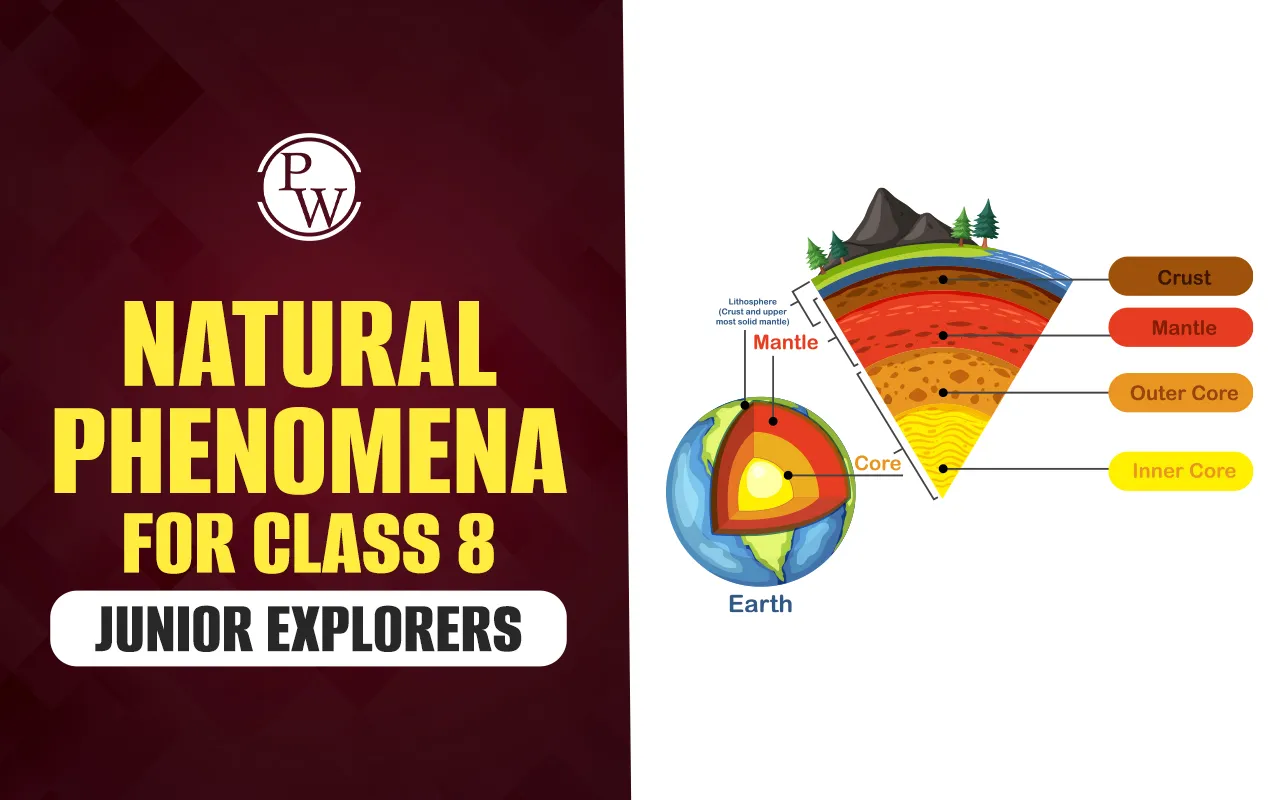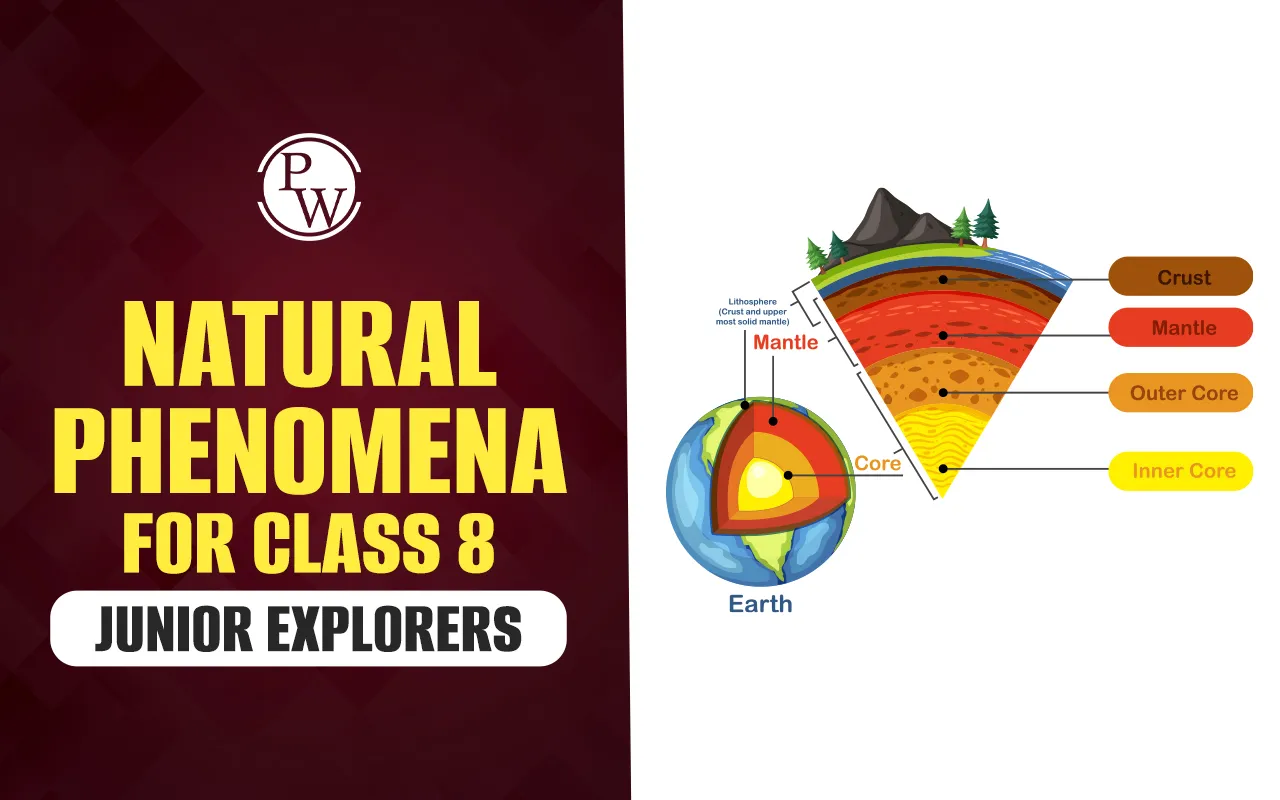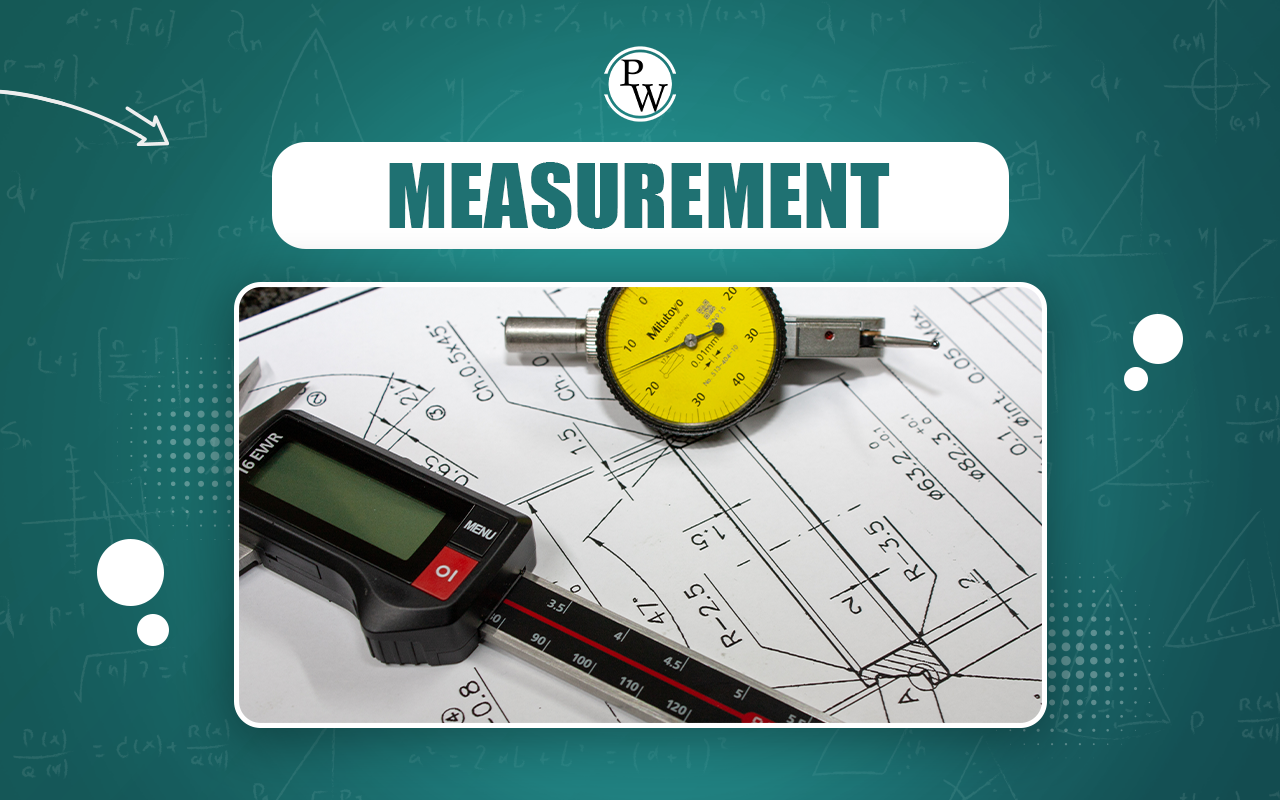

Natural phenomena are the captivating processes that shape our world. From the graceful flutter of leaves to the explosive power of volcanoes, they showcase the intricate forces of nature. Some natural phenomena range from microscopic marvels to cosmic spectacles, linking various scientific fields.
Whether it's the symmetry of snowflakes or the dance of migrating birds, studying these occurrences deepens our understanding of the Earth's complexity. Even in the cosmos, phenomena like solar eclipses and gravitational interactions captivate our imagination. Exploring these phenomena expands our knowledge, drives scientific progress, and fosters a greater awe for the universe.Electrically Neutral State of Matter
The electrically neutral state of matter refers to a condition in which an object or substance consists of an equal number of positive and negative charges. This equilibrium of charges results in a net charge of zero, rendering the object electrically neutral. In an electrically neutral state, the total positive charge of the protons within the atoms balances the total negative charge of the electrons, creating a balanced and stable system.Charging by Rubbing
Charging by rubbing, also known as triboelectric charging, is a phenomenon where objects become electrically charged through frictional contact and the transfer of electrons from one object to another. When two objects with different tendencies to hold onto their electrons come into contact and are then separated, one object gains electrons while the other loses them. This leads to a difference in electric charge between the two objects and causes them to become charged.Examples of Charging by Rubbing
- Balloon and Hair: Rubbing a balloon against hair can transfer electrons from the hair to the balloon. As a result, the balloon becomes negatively charged, while the hair becomes positively charged. This charge separation creates an attractive force between the balloon and the hair, causing the balloon to stick to the hair.
- Amber and Cloth: In ancient times, it was observed that rubbing amber against cloth (such as wool) could generate static electricity. The friction between the two materials causes electrons to move from the amber to the cloth. The amber becomes positively charged, while the cloth becomes negatively charged.
- Polyethylene Rod and Fur: When a polyethylene rod is rubbed against fur, electrons are transferred from the fur to the rod. The rod gains a negative charge, while the fur gains a positive charge. This charge separation can lead to observable effects, such as the rod attracting small objects like paper bits.
Types of Charges and Their Interaction
Electric charge is a basic property of matter that plays a vital role in the behavior of particles and their interactions. These charges are responsible for the interactions between particles and the creation of electric fields. Let's delve into the types of charges and their interactions.- Positive Charge: A particle with excess protons (positively charged subatomic particles) is considered to have a positive charge. The symbol for a positive charge is ‘+’. Protons situated in the nucleus of an atom carry positive charges.
- Negative Charge: A particle with excess electrons (negatively charged subatomic particles) possesses a negative charge. The symbol for a negative charge is ‘-‘. Electrons, situated in orbit around the nucleus of an atom, carry negative charges.
Interaction Between Charges
The interaction between charges is governed by Coulomb's law, which describes the electrostatic force between two charges. This law states that the force between two charges is directly proportional to the product of their magnitudes and inversely proportional to the square of the distance between them.Interaction of Like and Unlike Charges
- Like Charges: When two charges of the same type (both positive or both negative) are brought close together, they repel each other. The electrostatic force between them is repulsive, pushing the charges apart.
- Unlike Charges: When charges of different types (one positive and one negative) are brought close together, they attract each other. The electrostatic force between them is attractive, pulling the charges together.
Transfer of Charge
Charge transfer is a fundamental concept in electricity that describes the movement of electric charge from one object to another. Like charges repel and opposite charges attract each other. The transfer of charge can occur through various processes, such as friction, conduction, and induction.Electroscope
An electroscope is a device used to detect the presence of electric charge. It consists of a metal rod or leaf suspended from a conductor in an insulating housing. When a charged object is brought close to the electroscope, it induces a charge in the electroscope's metal rod or leaf. If the charges have the same sign, the metal rod/leaf will repel, indicating the presence of a charge. If the charges are opposite, the rod/leaf will attract. The electroscope can also be used to determine the type of charge on an object.Earthing (Grounding)
Earthing , also known as grounding, is a safety measure employed in electrical systems. Its primary purpose is to prevent an excessive build-up of electric charge and establish a pathway for the discharge of any accumulated charge. In the context of an electrical circuit, earthing involves connecting the metallic components of an electrical device or system to either the Earth's surface or an underground conductive material. This connection enables excess charge to safely flow into the ground, greatly reducing risks such as electric shocks, fires, and equipment damage.Lightning
Lightning is a natural occurrence of electrical energy discharge that takes place during thunderstorms. It happens when accumulated electricity in the atmosphere releases rapidly. This phenomenon occurs due to the separation of positive and negative charges in clouds or between clouds and the Earth's surface. As the charge separation intensifies, it creates an enormous electrical potential difference that ionizes the air, forming a conductive path for a lightning bolt. There are two types of lightning discharges: intra-cloud lightning (between clouds) and cloud-to-ground lightning (between a cloud and the ground).Relation Between Electroscope, Earthing, and Lightning
Electroscope, earthing, and lightning concepts are interconnected through the principles of charge transfer and discharge.- Electroscope and Charge Transfer: An electroscope can demonstrate the transfer of charge. When a charged object is brought close to an electroscope, the charge on the object induces a charge of the opposite sign on the electroscope's metal rod or leaf. This shows the basic principles of charge induction.
- Earthing and Lightning Protection: Earthing plays a critical role in lightning protection. Tall structures like buildings and transmission towers are often equipped with lightning rods. These rods are connected to conductive pathways that lead to the ground. When lightning approaches, the lightning rod provides a path of least resistance for the discharge of the lightning's energy, guiding it safely into the ground and preventing damage to the structure.
- Lightning and Charge Discharge: Lightning is a massive discharge of accumulated electrical energy in the atmosphere. It occurs due to the buildup of charge separation between clouds and the ground. The discharge path created by lightning is a natural example of charge transfer and discharge, similar to the principles demonstrated by an electroscope.
Story of Lightning
Lightning stands as one of the most captivating displays of power and energy. This ethereal dance of charged particles across the sky has been revered and feared by humans throughout history.Origins and Formation
Lightning is the visible discharge of electrical energy that occurs between clouds or between a cloud and the Earth's surface. It originates from the separation of positive and negative charges within a thundercloud. A powerful electrostatic field is generated as a cloud builds up electrical charge due to the collision and friction between ice crystals and water droplets. When the difference in charge becomes great enough, it triggers a sudden and violent release of energy, resulting in a lightning bolt.The Dance of Energy
A lightning bolt is a breathtaking fusion of science and art. The moment a cloud-to-ground lightning bolt occurs, it heats the surrounding air to around 30,000 degrees Celsius (54,000 degrees Fahrenheit) - hotter than the surface of the sun. This heat causes the air to expand explosively, creating the characteristic sonic shockwave we recognize as thunder.Dangers of Lightning
While the beauty of lightning is undeniable, its power carries significant dangers:- Fire: Lightning strikes can ignite wildfires, especially in dry and wooded areas. These fires spread rapidly and cause extensive damage to ecosystems and property.
- Injury and Death: Lightning strikes can cause severe injuries or even fatalities to humans and animals. Although direct strikes are rare, people can get injured by the current traveling through the ground or conducting objects.
- Property Damage: Lightning can cause substantial damage to structures, electrical systems, and electronic devices. Surge protectors and lightning rods can help mitigate this risk.
- Electric Disruption: Lightning can disrupt power grids and communication systems, leading to widespread outages and disruptions in services.
Lightning Safety
To stay safe during thunderstorms and lightning activity, consider the following precautions:- Seek Shelter: If you hear thunder, know that you are within striking distance of lightning. Seek shelter indoors, away from windows, doors, plumbing, and electrical wiring.
- Maintain Distance from Tall Objects: Avoid open fields, hilltops, tall trees, and other elevated areas. Lightning tends to strike the tallest objects.
- Avoid Water: Bodies of water are excellent conductors of electricity. During thunderstorms, stay away from lakes, rivers, pools, and the beach.
- Stay Indoors: Avoid open areas and isolated trees if you're caught outside and can't find proper shelter. Crouch down on the balls of your feet to minimize contact with the ground.
- Wait for Safety: Wait for 30 minutes after the last sound of thunder before leaving shelter. Lightning can strike from a distance, and storms move quickly.
Earthquakes
An earthquake is a natural calamity that occurs when energy is suddenly released in the Earth's crust, causing seismic waves to travel through the ground. This release of energy is usually triggered by the movement of tectonic plates, which are large sections of the Earth's lithosphere floating on the semi-fluid asthenosphere beneath them. These plate movements are driven by intense heat originating from within the Earth's core, giving rise to the concept of plate tectonics.Causes of Earthquakes
- Tectonic Plate Movements: The primary cause of earthquakes is the movement of tectonic plates. There are three main types of plate movements: convergent, divergent, and transform. When plates collide (convergent) or slide past each other (transform), immense stress builds up along faults, which are fractures in the Earth's crust.
- Volcanic Activity: Earthquakes can also be triggered by volcanic activity. As magma rises within a volcano, it can exert pressure on the surrounding rocks, leading to fractures and earthquakes.
- Human Activities: Certain human activities, such as mining, reservoir-induced seismicity due to large dams, and hydraulic fracturing (fracking), can induce earthquakes. These are often referred to as induced seismicity.
Movement of Plates and Faults
The movement of tectonic plates leads to the formation of faults. A fault is a fracture in the Earth’s crust along which movement has occurred. The most significant earthquakes often occur along faults. The point within the Earth where the earthquake originates is called the focus or hypocenter, while the point directly above the focus on the Earth's surface is the epicenter.Seismograph and Richter Scale
A seismograph is an instrument utilized for detecting and recording seismic waves created by earthquakes. It comprises a ground-motion sensor called a seismometer, and a device for recording the data. Seismographs play a vital role in providing essential information regarding an earthquake's magnitude, location, and depth. The Richter Scale, developed by Charles F. Richter in 1935, is a measurement system used to quantify the magnitude of an earthquake. It assesses the amplitude of seismic waves recorded by a seismograph. Each whole number increase on the Richter Scale indicates a tenfold amplification in the seismic waves' size and roughly 31.6 times more energy release.Damage Caused Due to Earthquakes
Earthquakes can cause a wide range of destructive effects:- Ground Shaking: The violent shaking of the ground can lead to buildings collapsing, landslides, and other forms of structural damage.
- Tsunamis: Underwater earthquakes can displace large volumes of water, resulting in massive oceanic waves that can inundate coastlines.
- Liquefaction: In certain areas with loose, water-saturated soils, the shaking during an earthquake can cause the ground to behave like a liquid, resulting in sinking buildings and infrastructure.
- Aftershocks: Aftershocks are small earthquakes that follow the main shock and can cause additional damage to already weakened structures.
Protection Against Earthquakes
Indoor Protection
- Drop, Cover, and Hold On: During an earthquake, the safest action indoors is to lie down or sit on the ground, take cover under a strong piece of furniture, and hold on until the shaking stops.
- Secure Heavy Objects: Secure heavy furniture and objects to walls. This prevents them from falling during an earthquake.
- Emergency Supplies: Keep emergency supplies such as food, water, first aid kits, and flashlights readily accessible.
Outdoor Protection
- Move Away from Buildings: If you’re outdoors during an earthquake, move away from buildings, streetlights, and utility wires to avoid falling debris.
- Open Areas: Seek open areas away from trees, buildings, and power lines to minimize the risk of objects falling on you.
- Car Safety: If driving, pull over to an area that is away from overpasses, bridges, and power lines. Stay inside the car until the shaking stops.
Static Charges
Static electricity, a fascinating and often perplexing phenomenon, has intrigued humanity for centuries. It involves the accumulation of electric charges on the surface of objects, resulting in surprising and sometimes startling effects. This accumulation of charges occurs due to the movement of electrons, the negatively charged subatomic particles, between objects.Methods of Charging
A body can be charged by rubbing two surfaces to each other due to friction. Static charge is produced by the rubbing of two surfaces.Electric Discharge
Electric discharge occurs when the accumulated static charges on an object suddenly move from one location to another, usually through a pathway that offers less resistance. This discharge is commonly observed as sparks or a sudden flow of current, often accompanied by a crackling sound. Lightning, a natural and powerful form of electric discharge, occurs when the accumulated static charges in the atmosphere discharge between clouds or between clouds and the ground.Final Thoughts
The natural world is full of amazing things that can surprise and awe us. From the sparkling beauty of lightning to the simple joy of a balloon sticking to our hair, these natural phenomena remind us of the wonders all around us. Exploring and understanding these phenomena can help us appreciate the magic of nature even more. The Fundo Experiment Kit is a valuable resource for students of all ages. With over 20 experiments, it's the perfect way to learn about physics, chemistry, and biology. Order yours today! Order your kit today and start your journey of scientific discovery! Related LinksSome Natural Phenomena FAQs
Q1. What is a seismograph? Ans. A seismograph is a device that records and measures the intensity, duration, and direction of earthquakes and ground vibrations. Q2. Explain why a charged body loses its charge if we touch it with our hand. Ans. When we touch a charged body, electrons move between it and our hand, equalizing charges and neutralizing the body. Q3. What are the causes of natural phenomena? Ans. Natural phenomena result from complex interactions of natural forces, including geological processes, atmospheric conditions, and celestial events, shaping Earth's dynamics.What is a seismograph?
A seismograph is a device that records and measures the intensity, duration, and direction of earthquakes and ground vibrations.
Explain why a charged body loses its charge if we touch it with our hand.
When we touch a charged body, electrons move between it and our hand, equalizing charges and neutralizing the body.
What are the causes of natural phenomena?
Natural phenomena result from complex interactions of natural forces, including geological processes, atmospheric conditions, and celestial events, shaping Earth's dynamics.
Talk to a counsellorHave doubts? Our support team will be happy to assist you!

Free Learning Resources
PW Books
Notes (Class 10-12)
PW Study Materials
Notes (Class 6-9)
Ncert Solutions
Govt Exams
Class 6th to 12th Online Courses
Govt Job Exams Courses
UPSC Coaching
Defence Exam Coaching
Gate Exam Coaching
Other Exams
Know about Physics Wallah
Physics Wallah is an Indian edtech platform that provides accessible & comprehensive learning experiences to students from Class 6th to postgraduate level. We also provide extensive NCERT solutions, sample paper, NEET, JEE Mains, BITSAT previous year papers & more such resources to students. Physics Wallah also caters to over 3.5 million registered students and over 78 lakh+ Youtube subscribers with 4.8 rating on its app.
We Stand Out because
We provide students with intensive courses with India’s qualified & experienced faculties & mentors. PW strives to make the learning experience comprehensive and accessible for students of all sections of society. We believe in empowering every single student who couldn't dream of a good career in engineering and medical field earlier.
Our Key Focus Areas
Physics Wallah's main focus is to make the learning experience as economical as possible for all students. With our affordable courses like Lakshya, Udaan and Arjuna and many others, we have been able to provide a platform for lakhs of aspirants. From providing Chemistry, Maths, Physics formula to giving e-books of eminent authors like RD Sharma, RS Aggarwal and Lakhmir Singh, PW focuses on every single student's need for preparation.
What Makes Us Different
Physics Wallah strives to develop a comprehensive pedagogical structure for students, where they get a state-of-the-art learning experience with study material and resources. Apart from catering students preparing for JEE Mains and NEET, PW also provides study material for each state board like Uttar Pradesh, Bihar, and others
Copyright © 2025 Physicswallah Limited All rights reserved.












